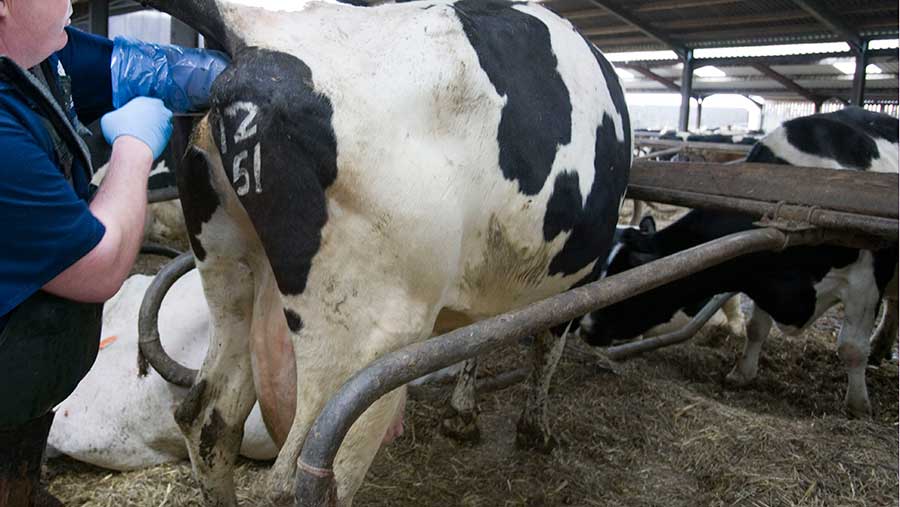Dairy fertility and production up, NMR study shows
 © FLPA/REX/Shutterstock
© FLPA/REX/Shutterstock Fertility in UK dairy herds has improved significantly, according to eight-year data trends published in the latest 500-herd report by the University of Reading.
The report analyses data and monitors trends from a cross-section of NMR-recorded Holstein herds for 34 key management criteria.
See also: How to prevent fertility issues in dairy cows due to lameness
Results show:
- Herds are producing about 8% more milk annually for every cow place in 2017 than they were in 2010.
- Milk yield a cow a year has increased from 7,665kg in 2010 to 8,381kg in the year ending August 2017, yet 305-day yields have hardly changed in that time.
- The report also shows lifetime daily milk production has increased from a median of 10.5kg in 2010 to 12.3kg in 2017.
James Hanks, who co-authored the report with Mohamad Kossaibati, said this progress in annual milk production could well be attributed to the improved fertility performance.
Fertility improvements include:
- The lactation length has reduced from 337 days in 2010 to 319 days in 2017 in median herds within the sample.
- This can be attributed to improvements in conception rates.
- The percentage of cows served by day 80 after calving has increased by 14% to 60% (70% in top 25% of herds).
- The percentage of cows pregnant by 100 days after calving has increased by 9% to 35% (41% in top 25%).
- Inter-service intervals at 18-24 days (heat detection) has increased by 6% to 36% (42% in top 25% of herds).
- Conception rate has improved by 2% to 34% (41% in top 25%).
- Submission rate has improved by 11% to 38% (49% in top 25%).
- Pregnancy rate has improved by 5% to 14% (18% in top 25%).
“This indicates that cows are getting pregnant earlier and being dried off sooner in preparation for their next calving. Earlier conception indicates there are fewer cows with extended lactations and low daily yields,” added Dr Hanks.
What has helped improve fertility?
While no single factor will be the sole contributor to fertility improvement, NMR vet Karen Bond suggested the UK herd will now be reaping the benefits of the fertility index introduced in 2005 that allowed producers to select for fertility in their breeding programmes.
“This will have made gradual improvements to herd fertility in the past decade,” she said.
Mrs Bond believes improved fertility management will be at the core of the improvements and rising trends, especially better heat detection.
“Heat detection is a big area and producers are embracing new technology to help them on farm. Cows will, in general, only display heat for a few hours and often not very strongly. If this is in the middle of the night the heat will be missed if they are relying solely on visual observation.
“Heat-detection systems, such as collars, allow these heats to be detected and provide accurate action lists. I think this has had a big effect on submission rates and getting cows back in calf quicker.”
Mrs Bond also believes the use of routine vet visits to examine problem cows earlier and address fertility issues will help to reduce calving-to-conception intervals and the calving index.
“Improved fertility performance plays a major role in herd efficiency and profitability, but it’s not a stand-alone issue. Only healthy cows, in good condition, will have good fertility.”
